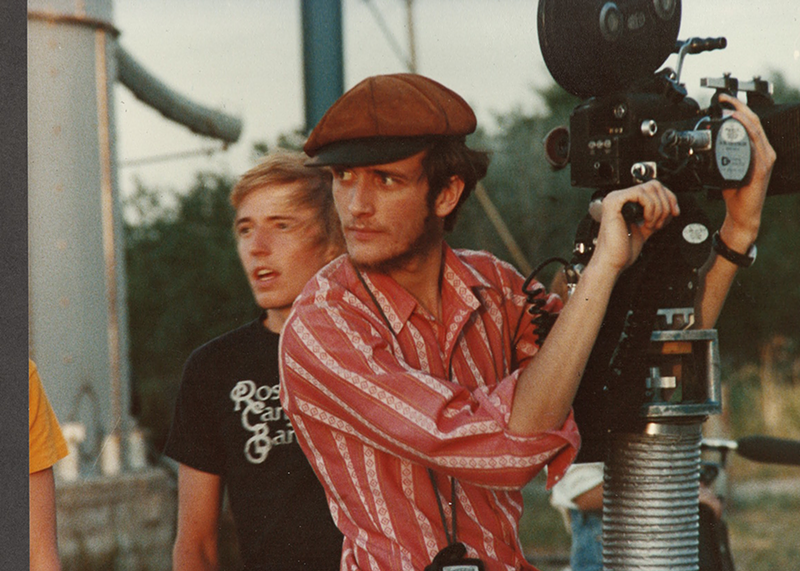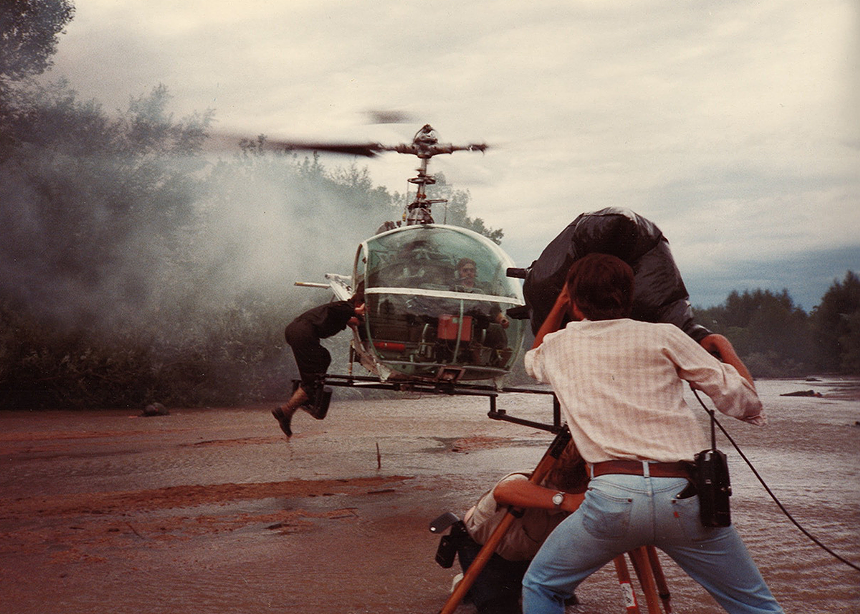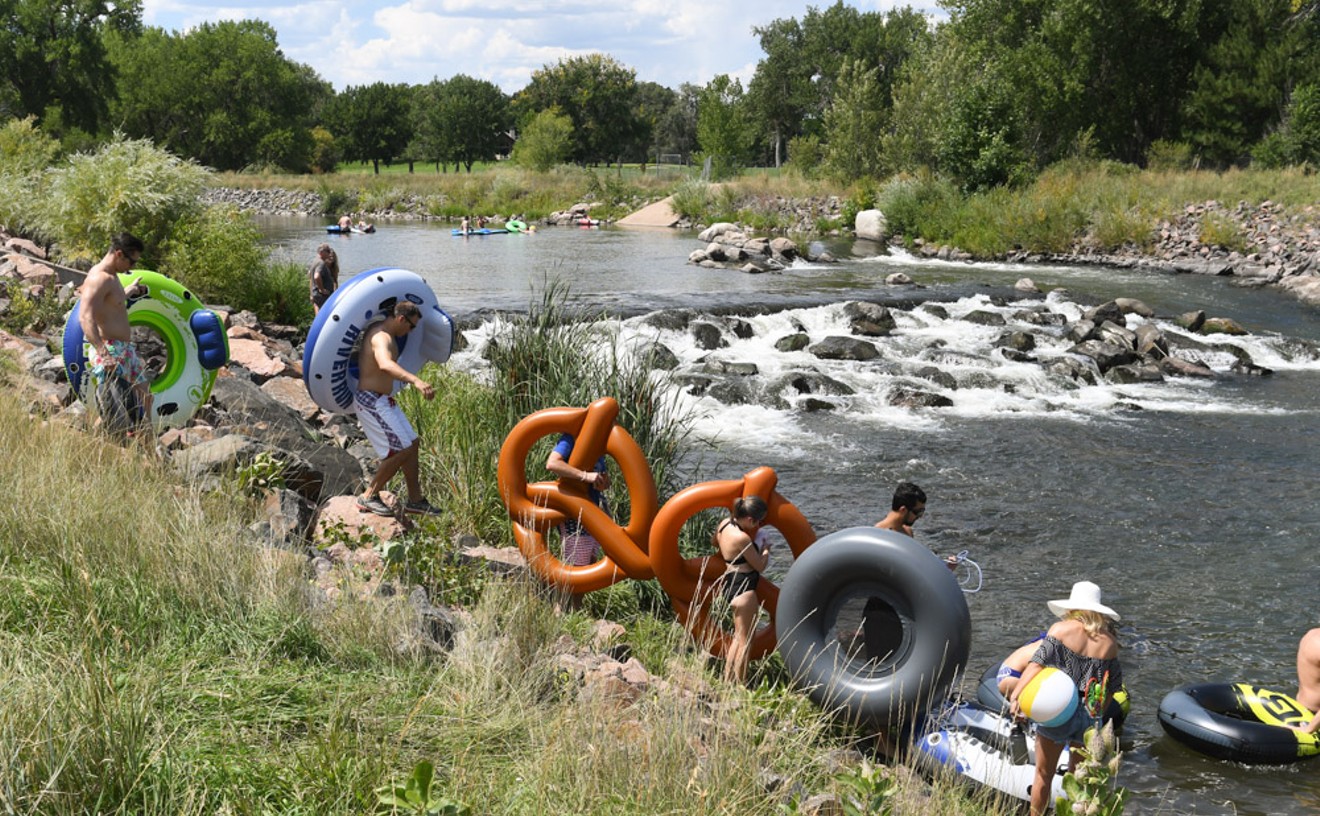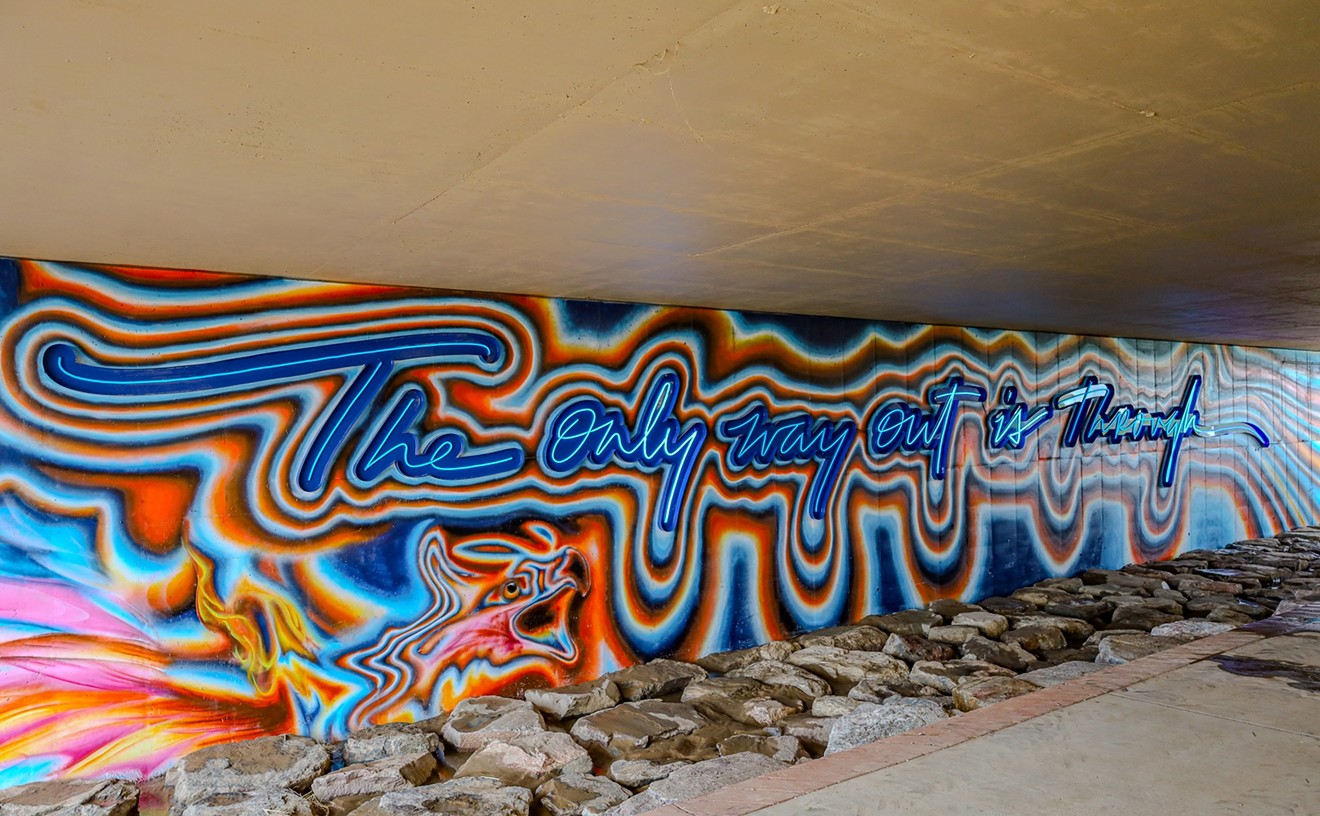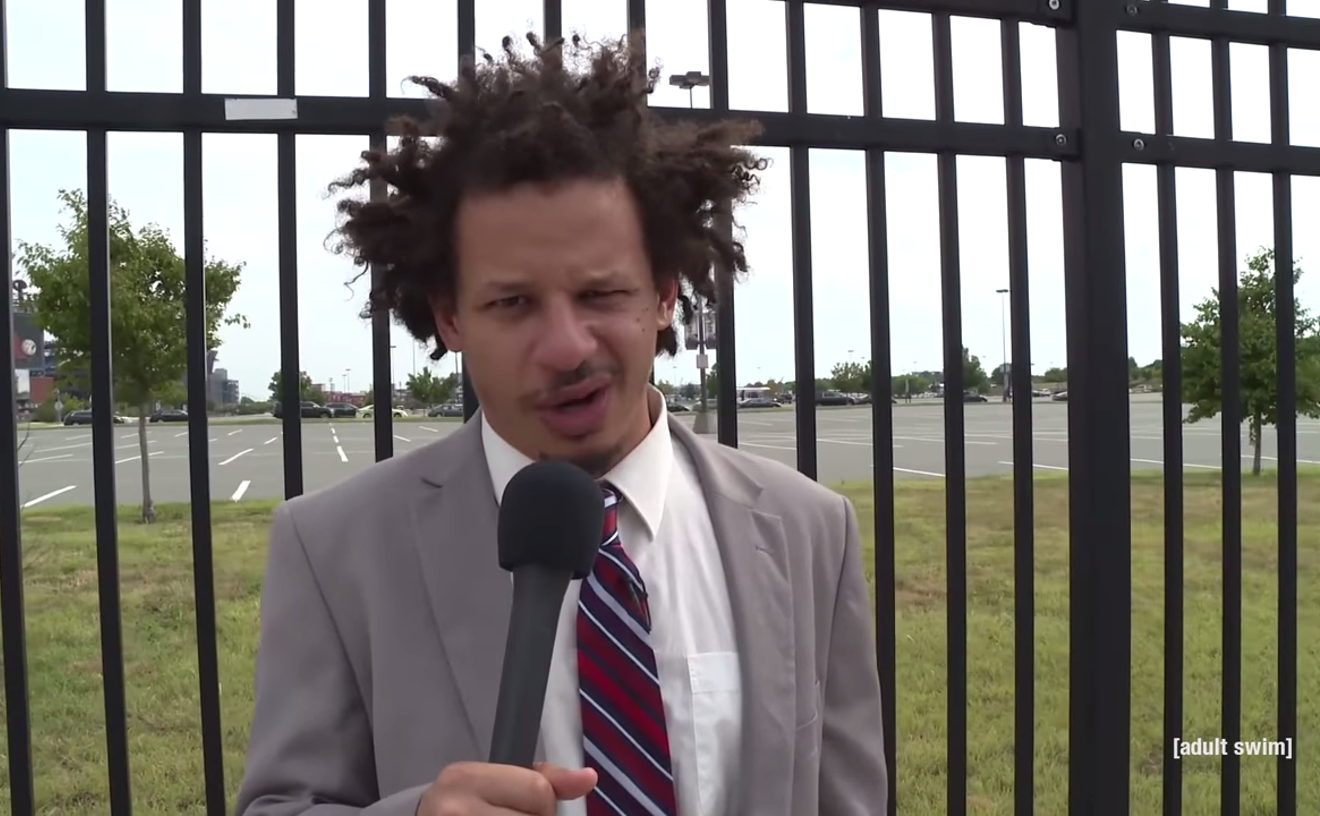Childhood friends Bruce Toscano and George Bradley had big dreams when they were growing up in Aurora during the ’70s. They were obsessed with going to the movies, especially horror films, and firmly believed that they were destined to make their mark in the arts.
"We lived next door to each other, and he was going to be the next great American novelist and I was going to be the next great American filmmaker," Toscano recalls.
Spoiler alert: It didn't quite work out that way. But in 1984, the movie-mad duo did produce perhaps the most unique film ever made in the Mile High City: the claustrophobic, hallucinatory Charon, later renamed The Jar. The film follows the unlucky Paul, whose discovery of a mysterious jar puts him at the center of a nightmare caused by its pint-sized demonic inhabitant. The film was shot in and around Denver and brims with dread, creepy yet beautiful expressionistic touches, and time-capsule glimpses of the 16th Street Mall and other area locales in the mid-’80s.
"I always describe it as one man's descent into madness. It's Fellini meets Godard, with a touch of Argento and Lynch thrown in," says Toscano, who not only directed, shot and edited the film, but also composed the score under the pseudonym "Obscure Sighs." Aspiring writer Bradley crafted the script, and both will join the film's lead actor, Gary Wallace, for a screening on Saturday, June 22, at the Sie FilmCenter. The event is presented and hosted by Theresa Mercado as part of her Scream Screen series. She was initially approached with the idea by Wallace, who still lives in the area.
"[He] let me know he was in a film shot in Denver in the early 1980s [and] mentioned how hard it was to find," Mercado recalls. "I was immediately intrigued because I love discovering weird, obscure genre feature films that were lensed in Colorado, because there aren't many. Once I watched it, I was blown away and knew I wanted to screen it. This film is a celebration of many things I hold dear: bizarre genre films, lost media, Old Denver, synth soundtracks...to name a few."
It will be the first time Bradley and Toscano have watched Charon/The Jar with a theater audience, as well as one of the first times audiences have been able to watch it as it was intended to be seen. When it was originally released, the film was essentially hijacked by its distributor, Magnum Entertainment, which renamed and released it in an underwhelming VHS presentation, with its vivid color palette diluted and its frames butchered by the much-maligned "pan and scan" process. Last year's restoration by cult film and soundtrack label Terror Vision admirably corrects both issues.
The screening is also an opportunity for today's local cinema buffs to take a trip into old Denver — not just in the glimpses frozen within the film, but through the lived experiences of its creators. In the ’70s and ’80s, it was Bradley and Toscano's mission to roam the city's aging theaters, hunting down cinematic thrills.
"We would watch horror films all the time," Bradley recalls. "We would take the bus down Colfax when we were teenagers to theaters downtown to see horror films in some of the old theaters."
"And if we couldn't legally get in, we would figure out a way to sneak in," adds Toscano, "because we were going to see these films no matter what."
Today, those downtown theaters exist only in their memories. The movie palaces of Curtis Street's "Theater Row," such as the Empress, the Paris, the Iris, the Princess and the Rialto, as well as the Denver Theatre on 16th Street and many others, all disappeared during the urban-renewal push of the ’80s. Only the Paramount, now a concert and comedy venue, remains. Outside of downtown, the Cooper Cinerama on Colorado Boulevard was of particular note. When it was built, the Cooper's massive curved screen was considered one of the finest theater experiences in the world; it was demolished in 1994.
"That was really my church," says Toscano of the Cooper. "That was an amazing theater to sit and watch films come through."
Another borderline religious experience for Toscano — though it was more like holy terror — occurred when he and Bradley caught Dario Argento's 1977 horror masterpiece, Suspiria.
"It came through Denver, and we went downtown to see it at some huge theater," says Toscano, who still describes the Italian film's impact with awe. "You thought you were just gonna go watch another horror film, but what turned out happening was that film was so emotionally overpowering that you actually had a horrifying experience: You weren't just sitting there watching a film. That film literally scared the crap out of us."
"We were hugely influenced by that," agrees Bradley. When the pair began work on Charon, Suspiria was a key stylistic influence for the script, which incorporated strong visual elements from the beginning.
"I had this original idea of having this creature in a jar that basically drives people crazy, and the title of the film, Charon, is titled after the boatman over the River Styx that ferries people into hell," says Bradley. "It was loosely the idea of that and just lots of visual imagery that we had discussed and talked about."
Suspiria's influence on the film can be seen in the sharp flashes of green, blue and red that accent Paul's increasingly frenzied and fragmented reality. These and other dream-like touches look better than they ever have before, thanks to the new 4K version created by Terror Vision from a partial camera negative and a vintage print. The new release also restores the film's anamorphic widescreen aspect ratio, of which more than half was lost on the original VHS transfer.
The botched release was a blow for Toscano, especially after a lengthy production that had been arduous but also benefited from serendipity, particularly with the help of the Colorado Film Commission.
"The amazing thing that happened was, unbeknownst to me...the governor [had come out] with a policy of 'We really want to support local Colorado filmmakers,'" explains Toscano. "I had no idea. ... A few weeks later I walked into the Colorado Film Commission and said, "Hi, I'm Mr. Nobody and I'm making a feature film." He was astonished at the response. "It was like the red carpet got rolled out, the clouds parted and the trumpets sounded, and they helped us do amazing things and get all these incredible locations," he recalls. "We were given carte blanche downtown, which I laugh about, because they only had one concern about us shooting downtown, and it wasn't 'Don't burn the town down,' or 'Don't do car crashes.' Their one concern was: 'You're not really gonna have Creature of the Black Lagoon monsters running up and down the mall, are you?' ... They let us do whatever we wanted."
Shooting in a pair of two-week sessions several months apart during 1983, Toscano managed to capture much of what he set out to film, including an impressive war sequence that involved flying a helicopter into a local park.
Today, "you can't fly aircraft into parks and have pyrotechnics going off and smoke and all this stuff, and they basically let us do it," he says. "I think today, the liability issues involved would outweigh the budget of the entire film. ... Back then, that policy really made it possible for us to do this project."
After the film wrapped, however, Magnum's heavy-handed treatment of his work soured Toscano on filmmaking entirely.
"It was emotionally devastating, and I just couldn't believe it, how this could even be acceptable," he says. "I decided, 'That's it, I don't want to be in this business, I am not going to be a filmmaker anymore,' and I basically got up and walked out."
Bradley, who moved on to other pursuits after finishing the script, didn't even know that it had been released until years later. "I just happened to be at a Blockbuster, renting horror films like I always did," he recalls. "I was looking on the shelves, and all of a sudden I saw a box that said The Jar on it. ... Again, I didn't even know they titled it The Jar, but I picked it up and looked on the back, and my name was on the back. It was just a shock. I had no idea it had been distributed to VHS."
Saturday's screening will be something of a reunion for the two friends: Terror Vision's efforts to return the film to its mind-bending glory have had a restorative effect on their friendship, as well. Toscano relocated to the Pacific Northwest after Charon's distribution debacle, and they haven't seen each other in the flesh in decades, although they've loosely kept in touch. It seems fitting that they will meet again as they step into a darkened theater full of horror fans — the same activity that brought them together over forty years ago, only this time, it's their nightmares that are being celebrated.
When asked if he feels vindicated by the revived interest in his work, Toscano can only marvel at time's bizarre river: "It's amazing," he concludes. "It's like this forty-year emotional burden has been lifted."
The Jar, aka Charon screens at 7 p.m., Saturday, June 22, at the Sie FilmCenter. Admission is $14. Tickets are available at denverfilm.org.
[
{
"name": "Air - MediumRectangle - Inline Content - Mobile Display Size",
"component": "12017618",
"insertPoint": "2",
"requiredCountToDisplay": "2"
},{
"name": "Editor Picks",
"component": "17242653",
"insertPoint": "4",
"requiredCountToDisplay": "1"
},{
"name": "Inline Links",
"component": "18838239",
"insertPoint": "8th",
"startingPoint": 8,
"requiredCountToDisplay": "7",
"maxInsertions": 25
},{
"name": "Air - MediumRectangle - Combo - Inline Content",
"component": "17261320",
"insertPoint": "8th",
"startingPoint": 8,
"requiredCountToDisplay": "7",
"maxInsertions": 25
},{
"name": "Inline Links",
"component": "18838239",
"insertPoint": "8th",
"startingPoint": 12,
"requiredCountToDisplay": "11",
"maxInsertions": 25
},{
"name": "Air - Leaderboard Tower - Combo - Inline Content",
"component": "17261321",
"insertPoint": "8th",
"startingPoint": 12,
"requiredCountToDisplay": "11",
"maxInsertions": 25
}
]

